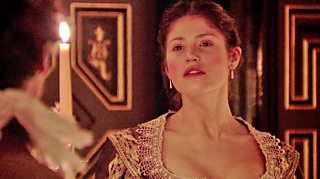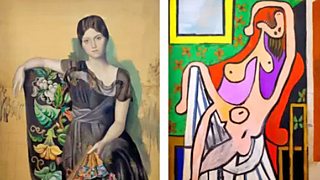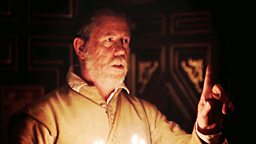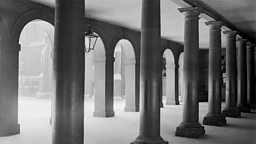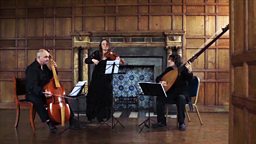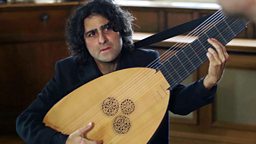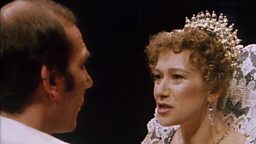The Duchess of Malfi: Darkness and Light
By Dr Farah Karim-Cooper
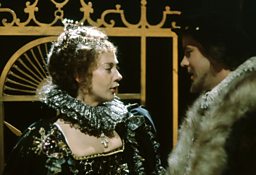
In John Webster's London, the night was palpably dark. There was very little in the way of street lighting beyond hand-held lanterns and torches.
The complete darkness played upon fears about the devil, witchcraft, and demonic possession, while sightings of apparitions and supernatural visitations mostly occurred at night.
The Duchess of Malfi contains a network of imagery related to light and darkness
In The Terrors of the Night, the writer Thomas Nashe tells us that the "night is the devil's black book, wherein he recordeth all our transgressions". For many, the night was associated with horror.
The Duchess of Malfi contains a network of imagery related to light and darkness.
These are manifest in a variety of image patterns related to witchcraft, diabolism, animals, night, astrology, knowledge, and female virtue. There are a number of uses that this range of patterns serves, one being to illustrate character.
Webster enjoyed writing 'Characters', a popular 17th-century genre which described a particular type in society, usually satiric in nature. He drops a few into the beginning of the play, when Delio and Antonio introduce us to the protagonists of the tragedy.
Significantly, the language of light surrounds the descriptions of the Duchess. One of the most complex female characters in early modern drama, the Duchess is not a virgin, but she is virtuous (virtue is often described in this period as that which 'shines forth'); she is deliberately transgressive of social boundaries, she is secretive and deceptive, but also heroic. She is a tower of light who 'stains the time past, lights the time to come'.
Ferdinand's darkness
Ferdinand, by contrast, is cloaked in darkness. His incestuous, misogynous impulses force him to deploy dark means to achieve even darker ends.
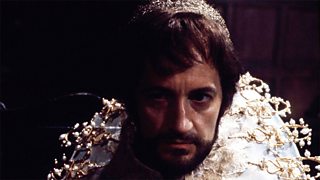
He is lycanthropic, attacking his own shadow to show how darkness seems to emerge from within him.
Darkness enables him to torment his sister with a dead hand and effigies of her family; it is a tangible device used by Ferdinand to destroy his sister in his perverse quest to extinguish her light.
In this play, darkness is the enemy to virtue. But this symbolic opposition between light and darkness also has some practical relevance in the indoor theatre.
The conditions of a theatre such as the Blackfriars enabled the torture scenes to pack the emotional punch that Webster intended.
In Jacobean indoor theatres, when it became dark outside it became dark inside, except for candlelight. Early modern theatre companies, like Shakespeare's King's Men (the company that performed The Duchess of Malfi), seem to have enjoyed performing indoors because of the flexible conditions.
Lighting became manipulable: actors could recede into the shadows; they could make the entire house glow with candles or shroud it in complete darkness by extinguishing lighting and 'clapping down' (as Thomas Dekker put it) the windows – suggesting that the use of wooden shutters was an important addition to the variety of lighting states indoors.
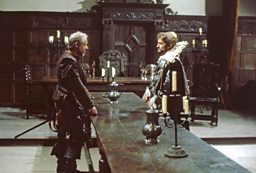
A terrifying illusion
Nowhere is the advantage of performing The Duchess of Malfi indoors made clearer than in Act 4.
A 'dead man's hand', for early moderns, would have connotations of witchcraft and criminality
The Duchess is imprisoned by her brother, Ferdinand, and Bosola has been instructed to enact a wildly macabre performance designed to frighten her.
She is first plunged into darkness, as Bosola tells her that her brother wants to see her:
He comes i'th' night;
And prays you gently neither torch nor taper
Shine in your chamber.
He exits with the lights, at which point Ferdinand is to enter. When the lights are taken away, it will seem even darker momentarily while the Duchess's eyes adjust.
At this point, Ferdinand tells her to take his hand, which turns out to be not his own hand, but a dismembered one.
This moment is horrific – a 'dead man's hand', for early moderns, would have connotations of witchcraft and criminality. It is a terrifying illusion that is enabled by darkness, the unreliability of sight and the deceptive intentions of Ferdinand.
Once Bosola re-enters with a light, the Duchess realises the 'horrible' fact that the hand is dismembered. She is then shown, behind a traverse, the figures of her family, as if dead.
The light will enable her to see this, but it should still be low enough to confuse her, to make her think what she sees are the lifeless bodies of her family. It is a successful piece of dramaturgy.
The King's Men performed The Duchess of Malfi at the Globe as well as the Blackfriars, but the effects would indeed have been very different. Darkness would not be able to do the work it does indoors.
Instead, on the Globe stage darkness would be figurative, something to be played by the characters through their lines, movements and reactions – this does not mean it would be less convincing or effective, just different.
The Globe's space allows an exploration of how this play might work in the conditions for which it was conceived. Indoors, where sight, light and darkness can be manipulated, the effectiveness of illusion becomes a defining dramaturgical principle for plays like The Duchess of Malfi.
Dr Farah Karim-Cooper is Head of Higher Education and Research at Shakespeare's Globe.

91�ȱ� Arts at the Globe
-
![]()
The Duchess of Malfi
Andrew Marr presents this production of John Webster's bloody revenge tragedy The Duchess of Malfi (1614) performed in a perfect recreation of an early Jacobean theatre
-
![]()
The Mysterious Mr Webster
Professor James Shapiro goes in search of the mysterious man behind The Duchess of Malfi, the son of a coachmaker who ended up rivalling Shakespeare
-
![]()
Gemma Arterton as The Duchess of Malfi
Preview Gemma Arterton in the title role of the Globe Theatre's production
More from 91�ȱ� Arts
-
![]()
Picasso’s ex-factor
Who are the six women who shaped his life and work?
-
![]()
Quiz: Picasso or pixel?
Can you separate the AI fakes from genuine paintings by Pablo Picasso?
-
![]()
Frida: Fiery, fierce and passionate
The extraordinary life of Mexican artist Frida Kahlo, in her own words
-
![]()
Proms 2023: The best bits
From Yuja Wang to Northern Soul, handpicked stand-out moments from this year's Proms


